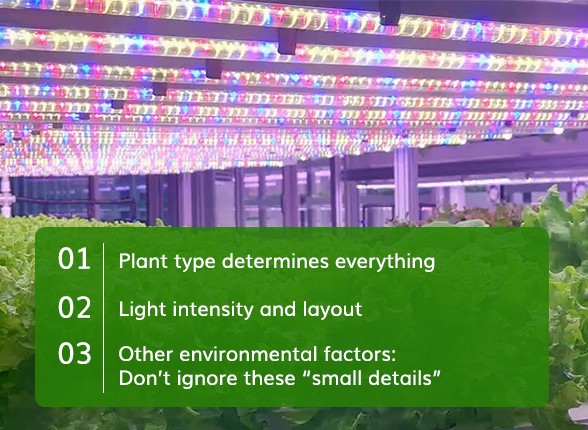Is the lack of sunlight in your home affecting your plants' growth? Whether it’s due to short winter days, a room with minimal natural light, or limited window space blocked by surrounding buildings, many plants struggle in such conditions.
Do your plants often look lifeless, with yellowing or drooping leaves? Relying solely on the small amount of light filtering through windows may work for hardy, low-light plants like snake plants or spider plants. However, most plants have specific lighting needs that must be met to stay healthy.
Insufficient light hampers photosynthesis, leading to slow growth, yellowing foliage, and eventual wilting. To ensure your plants thrive indoors, supplemental indoor lighting is often essential.
With various indoor lighting solutions available—ranging from fluorescent bulbs to LED grow lights, HPS lamps, and MH lamps—how do you choose the best option for your plants? Let’s explore the different options to help your plants flourish indoors.
1. Common Types of Indoor Lighting for Plant Growth
There are various types of plant grow lights available today, each with its own advantages and disadvantages. In the following section, we will review the most popular options, highlighting their benefits, drawbacks, and the situations where they are most effective.
1)Fluorescent Lights
Advantages: Cost-effective; simple to use and install.
Disadvantages: Limited light spectrum, missing essential red light for plant growth; low light efficiency, making it impractical for large-scale cultivation.
Usage Scenario: Small indoor gardens, seed germination, and plants or vegetables with low light requirements.
2)LED Grow Lamps

Advantages: Energy-efficient, long-lasting, and requires infrequent replacements.
Disadvantages: Higher upfront cost, though its energy efficiency and durability make it a cost-effective option over time.
Usage Scenario: Suitable for everything from small home gardening to large commercial planting needs.
3)HPS Lamps

Advantages: High light efficiency; perfect for large-scale cultivation; especially beneficial during the flowering and fruiting stages.
Disadvantages: High energy consumption and significant heat generation, which may require additional cooling systems to manage overheating.
Usage Scenario: Large-scale commercial planting; plants that require intense light.
4)MH Lamps
Advantages: Provides a full spectrum with plenty of blue light, making it excellent for the growth phase of plants; highly efficient in terms of light output.
Disadvantages: Generates substantial heat and uses a lot of power, potentially leading to higher electricity expenses with extended use.
Usage Scenario: Medium to large commercial planting; seedling and growth stages of plants.
2. How to Choose the Best Grow Lamp for Indoor Plants?

When choosing the best grow lamp for indoor plants, growers need to consider several factors beyond just price or brand. Here are some key considerations:
1)The Type of Plant Matters
It's essential to assess your plants' light requirements before choosing a grow light. Light-loving plants like tomatoes and peppers won't thrive under insufficient lighting.
Conversely, shade-tolerant plants, such as pothos and monstera, could suffer from "sunburn" if exposed to overly intense light.
2)Light Intensity and Positioning
Is a bright lamp always better for plants? Not necessarily. If the lamp is too close, the light may scorch the plants, while if it’s too far, the plants won’t get enough light. Just as we need to be careful about sun exposure, plants need balanced light positioning.
3)Environmental Factors: Don’t Overlook the "Little Details"
Besides light, temperature, humidity, and light duration are also crucial. LED grow lampsproduce less heat, which helps prevent plant damage from overheating.
However, if you use HPS or MH lamps, additional cooling equipment might be necessary to maintain the right environment.
3.Conclusion
Choosing the right plant grow light depends on your plant’s needs, environmental conditions, and budget. For beginners, fluorescent lights are a cost-effective option that meets basic needs.
LED grow lamps provide the best support throughout a plant’s entire life cycle, while HPS and MH lamps are more suited for specific growth stages.
4.FAQs
1)What Color of Light is the Worst for Growing Indoor Plants?
Green light offers little benefit to plants as their absorption rate of green light is low.
2)What Light Helps Plants Grow Indoors?
Blue light promotes leaf and stem growth, while red light encourages flowering and fruiting. Full spectrum LED lights are ideal for indoor gardening as they can meet plant needs from start to finish.























